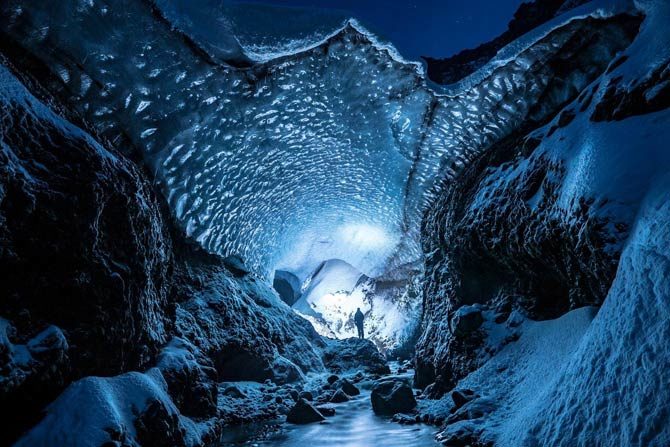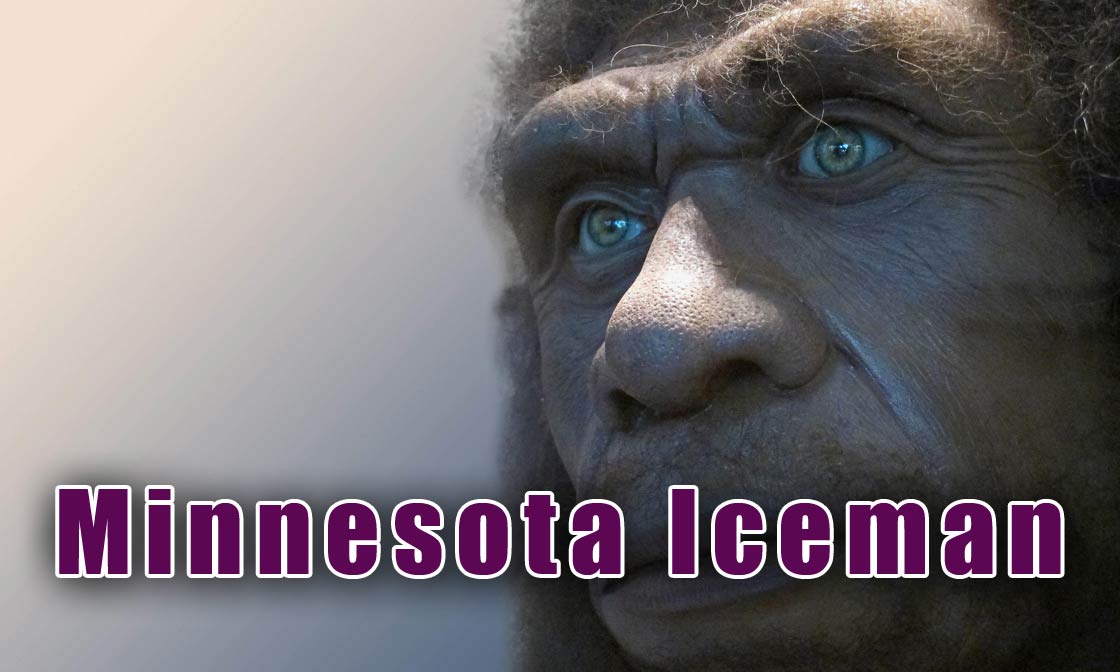The Iceman from Minnesota
Reports on relic hominids, such as Yeti or Bigfoot, from various parts of the globe, have been stimulating the imagination of people, including scientists, for years. While most of the traces allegedly left behind by these creatures have proven to be of known origin, some finds do not come up with a simple explanation. One of them is the “IceMan” from Minnesota.
Scientific sensation or clever forgery?
To this day, there are people who claim that the mysterious creature trapped in the ice is a specimen of an unknown species of creatures living somewhere in East Asia. Such a hypothesis was put forward by the Belgian zoologist Bernard Heuvelmans, who described the “Iceman”.
Heuvelmans was an extraordinary character. He was the first to scientifically analyze reports of alleged sea monsters and other cryptids; he also tried to find rational explanations for such reports – for this reason many of his contemporaries called him the “Sherlock Holmes of zoology.” So when he wrote in late 1968 that he had discovered a hominid unknown to science, many of his acquaintances assumed that he must have stumbled upon a specimen about which he did not doubt.
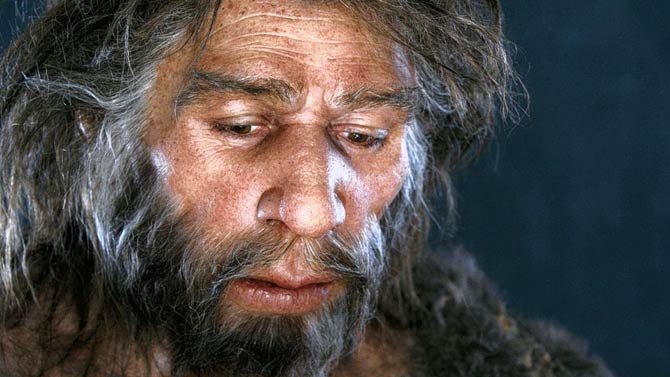
News from Minnesota
Heuvelmans had been friends with the American zoologist and traveler Ivan Sanderson for years. The latter became famous as a researcher of Bigfoot; he was also the editor of the magazine “Argosy”, which featured articles in various fields of science, but also sometimes less serious, sensationalized texts.
On December 9, 1968, Sanderson was contacted by his friend. He told about the strange find he had seen. Well, in the town of Rollingstone, Minnesota, there was supposed to be a farm owned by a certain Frank Hansen. On the farm, there was a truck with a trailer in which there was a human-like but fully hairy creature frozen in an ice block.
Sanderson notified Heuvelmans, as well as Argosa management, who agreed to finance the trip. Sanderson contacted Frank Hansen, the owner of the “Iceman”, who agreed to proceed with the research on the condition that the ice block itself was preserved. Upon arriving at the scene, the researchers saw a trailer. Inside was a huge freezer in which a mysterious creature rested. It was a bit crowded in the trailer, but Heuvelmans and Sanderson spent up to 11 hours a day analyzing, describing and taking many photos.

“Iceman”
Heuvelmans used good and modern equipment, so the photos he took are of excellent quality for those times. They show a two-legged creature about 180 cm tall, covered with dark hair except for the face and loins, which are hairless. The being was male. The torso was broad and well-muscled. The supraorbital ramparts were massive, the forehead was narrow and the nose was flattened. Human feet were characteristic – there was no space between the toe and the other toes that was typical of other primates.
Before his death, the creature fought a hard fight and was probably tortured. The left arm was unusually lopsided, apparently broken. One of the sockets was empty and the other eyeball was gouged out. The skull was damaged, it showed signs of a gunshot. One foot was apparently decomposed as it was hairless and gray in color. The creature was in a defensive position, as if covering its head with its left hand. There were traces of blood on the body. Both researchers concluded that the creature was only recently dead.
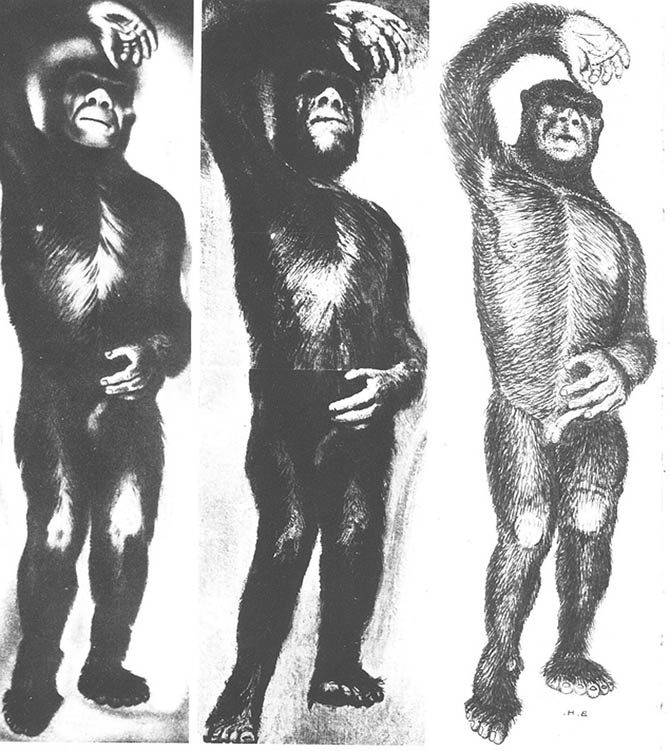
Where did the “Iceman” come from?
The origin of the creation was a mystery. Hansen gave several contradictory versions. He once claimed the creature was found in an ice block in Siberia; another time, it was bought from a dealer in Hong Kong. The rightful owner was a wealthy Californian, but wishing to remain anonymous – his identity was never established. Both scientists concluded that the only piece of information that is certain is the area – the find comes from the Far East.
Years later Heuvelmans drew attention to one important detail that could explain how the unusual object ended up in the US unnoticed. In those days, the corpses of American soldiers were transported from Vietnam to the United States, and as it turned out later, enormous amounts of drugs and valuable items, sometimes of considerable size, were smuggled in – so it is possible that even such an unusual find was transported. This would also explain why Hansen who looked after the exhibit never gave reliable information about its origin – he was simply afraid of the smuggling investigation.
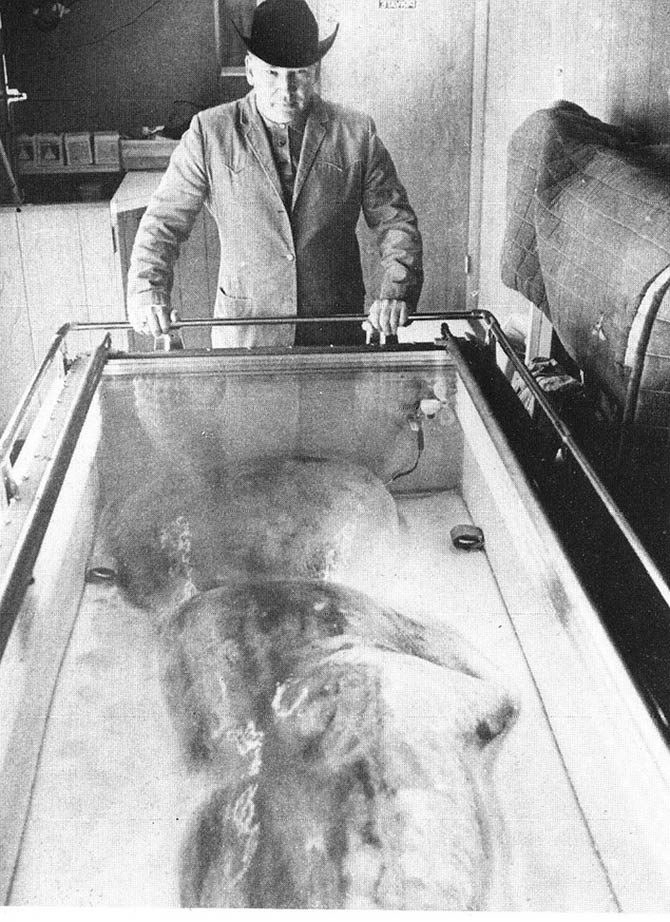
Sensation and intrigue
Heuvelmans concluded that an in-depth study of the find would only be possible if it attracted the attention of the scientific community. That is why he wrote a long and well-illustrated article, in which he even allowed himself to give the creature the scientific name Homo pongoides. The article met with interest, among others Samuel Coon, a respected anthropologist at the time, as well as scholars in Belgium and Great Britain. Scholars from the Smithsonian Institute in Washington, who named the find “The Minnesota Iceman”, also got acquainted with it. The scientific world became seriously interested in the find.
Meanwhile, Hansen, the owner of the farm where the specimen was exhibited, disappeared with the “Iceman” for unknown reasons. Unfortunately, it happened before the anthropologists were convinced that they should investigate the find. Hansen reappeared a few months later, in June 1969, as the holiday season began. However, when he presented the exhibit, it turned out that there were changes in it – the “Iceman” was arranged in such a way that more details could be recognized, e.g. teeth could be seen through parted lips.
Unfortunately, no one was sure now that it was the same specimen, which Heuvelmans and Sanderson saw. The latter admitted that he was fooled and the specimen was in fact a skillfully crafted prop – but he meant the one Hansen showed in the summer of 1969. Heuvelmans assured that the “Iceman” was real and had nothing to do with the later exhibit.
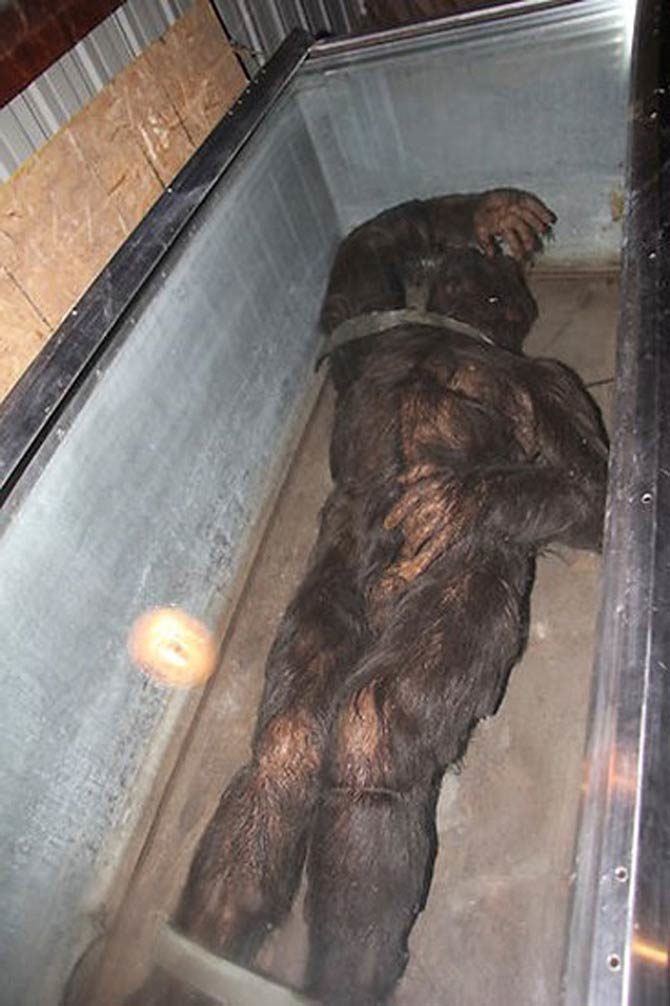
The End of the Iceman?
Heuvelmans intended to have his photos printed on National Geographic, but the magazine showed no interest. There were two reasons. First of all, the editorial office cared about the journal’s reputation and did not want to deal with the find that was not certified by science. However, the bigger problem was Sanderson’s magazine, “Argosy”. For unknown reasons, the author of the text gave the “Iceman” the name Bozo – the same name was used by the then known TV clown. This extremely misguided move made the scientific press completely lose interest in the case – it was considered an attempt to cause a sensation.
Finally, in 1972, the well-known and respected anthropologist John Napier published an article summarizing the whole case – he stated emphatically that the find was a hoax, although it was indeed carefully made. He also expressed his amazement that Heuvelmans, usually cautious about this type of revelation, had been fooled. The latter, however, believed that the creature he had seen in person was certainly real. It should be emphatically emphasized, however, that he was talking about the original “Iceman” he took pictures of in 1968, and not about a modified specimen that Napier saw.
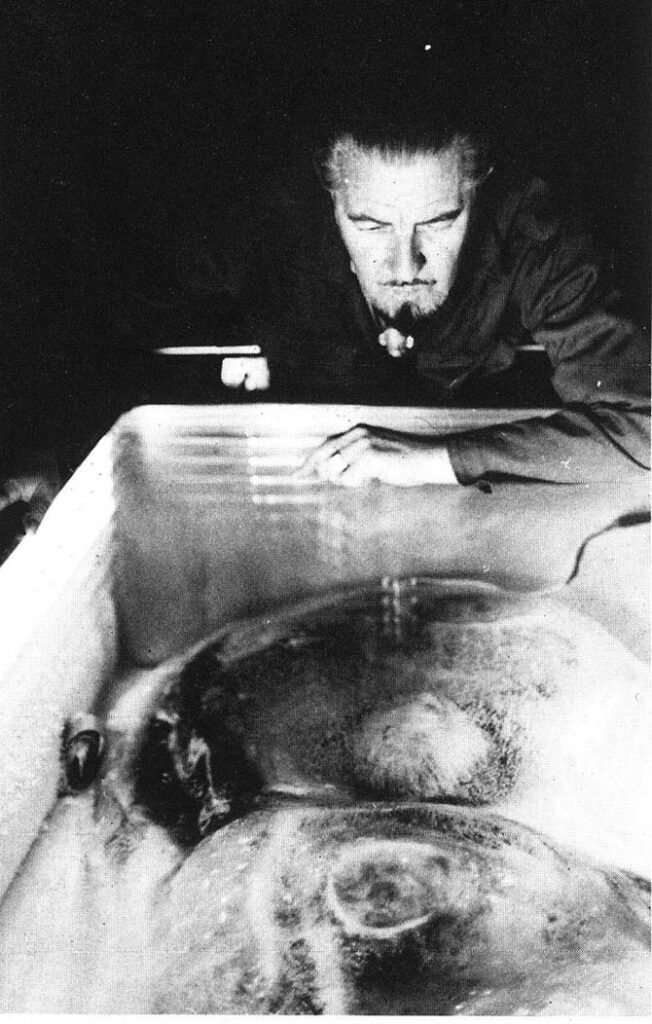
Assessment attempt
What could have been the creature that Heuvelmans saw? The scientist himself considered various options. He first considered that it might have been a cleverly disguised “ape-man” monkey, but rejected it as it would require too many alterations that would not be credible. For similar reasons, he rejected the hypothesis that he was a disguised man – the victim of an undiscovered murder. On the basis of analyzes, he decided that there was only one solution – the “Iceman” is a Neanderthal. Indeed, when comparing the photos taken by Heuvelmans with the most recent reconstructions of the appearance of the Neanderthal man, a significant similarity can be noticed.
Heuvelmans made another argument for the truth of his hypothesis. The specimen was supposed to come from East Asia, and to this day there are many tales of “wild people” completely covered with hair. Such stories appear regularly also in modern times, e.g. in 1949 a unit of French soldiers was supposed to shoot a human-sized bipedal ape. How could these creatures survive there? Heuvelmans explained this with the vast expanses of Asia and the multitude of hiding places in which “wild men” could hide.
Other scientists suggested that the scientist may have come across a perfectly made model of a proto-human. This, however, did not explain why the origin of the specimen was concealed by the farm owner, as there was nothing illegal about it; besides, it has never been possible to reach any person or institution that would make such an exhibit.
So what did Heuvelmans really see? His hypothesis that this was a Neanderthal man could only be held true if other scientists confirmed it. Unfortunately, by a coincidence, they did not manage to deal with the matter – the original specimen was lost and was replaced with something that was undoubtedly a model. As a result of this, we will probably never know the truth about the “Iceman”.

Hansen’s Diary
Before his death, Hansen published a kind of diary in which he said he shot a “snow man” in 1960 in the Wisconsin highlands while hunting deer. First, Hansen shot the deer, but the wounded deer managed to escape. He went looking for him. According to Hansen’s account, he found a deer surrounded by three yetis. Ripped the deer belly up – they ate the entrails and drank the blood. One of the creatures lunged at Hansen, screaming wildly and waving its arms. Hansen shot out of fear several times. Yeti fell dead.
The hunter left a battered yeti. He came back for it a few later. The corpse was well preserved as it was frozen over. From the forest, the Yeti found its way to Hansen’s house in Minnesota, then to the freezer, then to the exhibition, and then to the hideout. Why did Hansen hide and switch the body? He claims he was afraid of the responsibility when he realized that he had killed the person, not the animal.

Minnesota Iceman – interesting facts
- Bernard Heuvelmans did not like the name “Iceman” and never used it. He believed that this name detracted from his discovery.
- Wanting to find out where the find came from, scientists tried to interest the FBI in it, claiming that a sentient being was killed. However, the institution refused to initiate an investigation on the pretext that murder could only be said when a person was killed.
- During the Vietnam War, US newspapers reported that soldiers in the Vietnamese jungle were attacked by huge monkeys, but there are no large primate species in this country.
